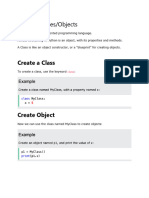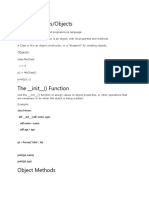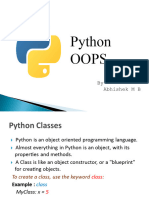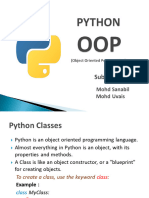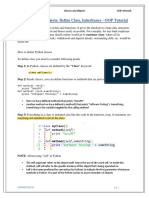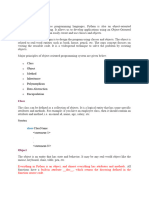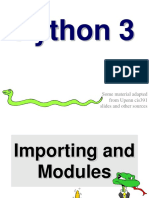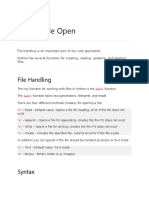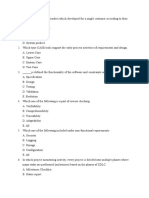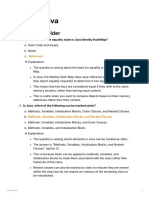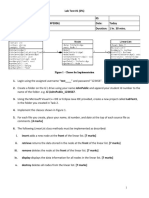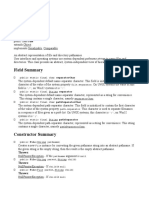0% found this document useful (0 votes)
288 views9 pagesClasses and Objects
The document discusses Python classes and objects. Some key points:
- A class is a blueprint that defines properties and methods commonly used to create user-defined objects. The class uses the __init__() method to initialize attributes of new object instances.
- Objects are instances of classes that inherit all the properties and methods of their class. The self parameter refers to the object itself.
- Inheritance allows a child class to inherit properties and methods from a parent class. The child class can override or extend the parent's functionality.
- The super() function allows child classes to inherit all methods and properties from their parent class. This avoids explicitly calling the parent's __init__() method.
Uploaded by
Abid ShaikhCopyright
© © All Rights Reserved
We take content rights seriously. If you suspect this is your content, claim it here.
Available Formats
Download as DOCX, PDF, TXT or read online on Scribd
0% found this document useful (0 votes)
288 views9 pagesClasses and Objects
The document discusses Python classes and objects. Some key points:
- A class is a blueprint that defines properties and methods commonly used to create user-defined objects. The class uses the __init__() method to initialize attributes of new object instances.
- Objects are instances of classes that inherit all the properties and methods of their class. The self parameter refers to the object itself.
- Inheritance allows a child class to inherit properties and methods from a parent class. The child class can override or extend the parent's functionality.
- The super() function allows child classes to inherit all methods and properties from their parent class. This avoids explicitly calling the parent's __init__() method.
Uploaded by
Abid ShaikhCopyright
© © All Rights Reserved
We take content rights seriously. If you suspect this is your content, claim it here.
Available Formats
Download as DOCX, PDF, TXT or read online on Scribd
/ 9



